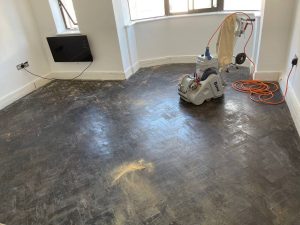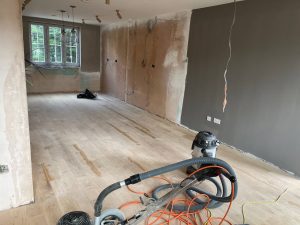The Importance of Ventilation During Floor Sanding

Expert Tips to Ensure a Safe and Healthy Environment in Your London Home
Introduction
Floor sanding is an essential process for restoring and maintaining the beauty of wooden floors. However, it generates a significant amount of dust and fumes, which can impact indoor air quality. Proper ventilation during floor sanding is crucial to ensure a safe and healthy environment in your London home. In this guide, we’ll explore the importance of ventilation and provide expert tips to maintain good air quality during the sanding process.
Why Ventilation is Important
Ventilation during floor sanding is vital for several reasons:
- Health and Safety: Sanding generates dust and fumes from finishes and sealants, which can be harmful when inhaled. Good ventilation reduces the concentration of these particles in the air, protecting your respiratory health.
- Improved Air Quality: Proper ventilation helps to remove dust and fumes from the work area, improving the overall air quality in your home.
- Efficient Drying: Ventilation aids in the drying process of finishes and sealants, ensuring they cure properly and quickly.
- Fire Safety: Reducing the concentration of flammable fumes decreases the risk of fire hazards during the sanding and finishing process.
Steps to Ensure Proper Ventilation
Follow these steps to ensure adequate ventilation during floor sanding:
- Open Windows and Doors: Create cross-ventilation by opening windows and doors on opposite sides of the room. This allows fresh air to flow in and dusty air to exit.
- Use Fans: Position fans near windows and doors to help circulate air and push dust and fumes out of the room. Exhaust fans are particularly effective in removing airborne particles.
- Seal Off Other Areas: Use plastic sheeting to seal off adjacent rooms and areas to prevent dust and fumes from spreading throughout your home.
- Wear Protective Gear: Even with good ventilation, wearing a dust mask, safety goggles, and ear protection is essential to protect yourself from dust and noise.
- Take Breaks: Regularly take breaks outside the work area to allow your body to get fresh air and reduce prolonged exposure to dust and fumes.
Using Dust Containment Systems
Modern floor sanding equipment often comes with dust containment systems that can significantly reduce the amount of airborne dust:
- HEPA Filters: High-efficiency particulate air (HEPA) filters are effective in trapping fine dust particles, preventing them from being released into the air.
- Dustless Sanding Machines: Invest in or hire dustless sanding machines that are designed to capture dust at the source, improving air quality and reducing cleanup time.
Post-Sanding Cleanup

After the sanding process is complete, thorough cleanup is essential to maintain good air quality:
- Vacuum Thoroughly: Use a vacuum cleaner with a HEPA filter to clean up dust from the floor, walls, and other surfaces. Pay special attention to corners and edges where dust can accumulate.
- Wipe Down Surfaces: Use a damp cloth to wipe down all surfaces, including windowsills, countertops, and baseboards, to remove any remaining dust.
- Mop the Floor: After vacuuming, mop the floor with a damp mop to pick up any remaining dust particles and ensure a clean surface for finishing.






The Best Practices for Sanding Oak Floors
The Best Practices for Sanding Oak Floors Expert Tips and Techniques for Achieving a[Read more...]
The Role of Floor Sanding in Allergy Prevention
The Role of Floor Sanding in Allergy Prevention Maintain a healthier home environment in[Read more...]
The Benefits of Floor Sanding for Open House Showings
London Property Tips Home About Contact The Benefits of Floor Sanding for Open House[Read more...]
Gallery 07 – Pine floor board
[Read more...]
The Best Maintenance Practices for Sanded Floors in Humid Climates
The Best Maintenance Practices for Sanded Floors in Humid Climates Keep your London home’s[Read more...]
Gap Filling
This is a process during which gaps between the floor boards are filled. We fill[Read more...]
The Benefits of Hiring a Local Floor Sanding Expert
The Benefits of Hiring a Local Floor Sanding Expert Enhancing Your London Home with[Read more...]
How to Sand Floors in Small Spaces: Tips and Tricks
How to Sand Floors in Small Spaces: Tips and Tricks Sanding floors in[Read more...]
The Ultimate Checklist for Floor Sanding Preparation
The Ultimate Checklist for Floor Sanding Preparation Ensure a Smooth and Efficient Floor Sanding[Read more...]
The Environmental Impact of Floor Sanding and How to Mitigate It
Environmental Impact of Floor Sanding Floor sanding is an essential process for maintaining[Read more...]